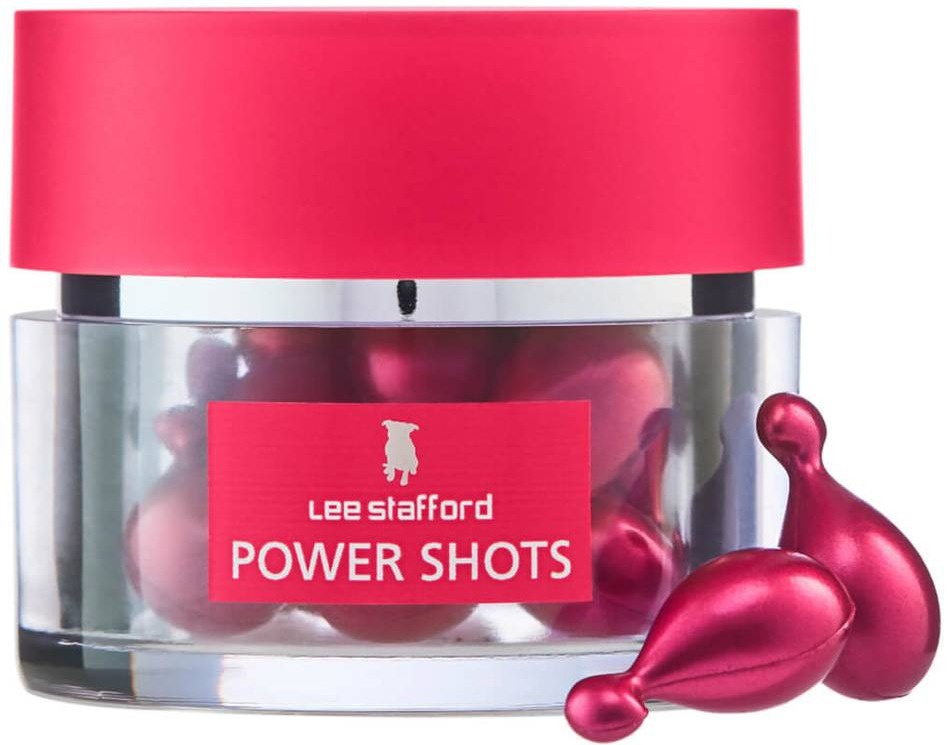
Hair Apology Power Shots
Highlights
Key Ingredients
Skim through
| Ingredient name | what-it-does | irr., com. | ID-Rating |
|---|---|---|---|
| Cyclopentasiloxane | emollient, solvent | ||
| Dimethiconol | emollient, moisturizer/humectant | ||
| Polysilicone-15 | sunscreen | goodie | |
| Phenylpropyldimethylsiloxysilicate | emollient | ||
| Parfum | perfuming | icky | |
| Polysilicone-18 Cetyl Phosphate | |||
| Panthenyl Triacetate | |||
| Phytantriol | moisturizer/humectant | 2, 2 | |
| Keratin Amino Acids | |||
| Hydrolyzed Silk | moisturizer/humectant |
Lee Stafford Hair Apology Power ShotsIngredients explained
A super commonly used 5 unit long, cyclic structured silicone that is water-thin and does not stay on the skin but evaporates from it (called volatile silicone). Similar to other silicones, it gives skin and hair a silky, smooth feel.
It's often combined with the non-volatile (i.e. stays on the skin) dimethicone as the two together form a water-resistant, breathable protective barrier on the skin without a negative tacky feel.
A thick, high molecular weight silicone that is usually diluted in another, lighter silicone fluid (like dimethicone or cyclopentasiloxane). The dimethiconol containing silicone blends leave a silky smooth, non-greasy film on the skin.
A silicone-based, chemical sunscreen agent that protects the skin in the UVB range (290-320 nm) with a peak absorbance at 312 nm. It is a colorless to pale yellow liquid with nice and non-shiny (at least compared to most other sunscreens) sensorial properties.
It is a pretty good team player and can stabilize the famously unstable UVA filter, avobenzone and works especially well with Ensulizole to achieve high SPF protection. It is approved up to 10% as a sunscreen filter in the EU and most parts of the world, except for the United States.

Exactly what it sounds: nice smelling stuff put into cosmetic products so that the end product also smells nice. Fragrance in the US and parfum in the EU is a generic term on the ingredient list that is made up of 30 to 50 chemicals on average (but it can have as much as 200 components!).
If you are someone who likes to know what you put on your face then fragrance is not your best friend - there's no way to know what’s really in it.
Also, if your skin is sensitive, fragrance is again not your best friend. It’s the number one cause of contact allergy to cosmetics. It’s definitely a smart thing to avoid with sensitive skin (and fragrance of any type - natural is just as allergic as synthetic, if not worse!).





You may also want to take a look at...
| what‑it‑does | emollient | solvent |
| what‑it‑does | emollient | moisturizer/humectant |
| what‑it‑does | sunscreen |
| what‑it‑does | emollient |
| what‑it‑does | perfuming |
| what‑it‑does | moisturizer/humectant |
| irritancy, com. | 2, 2 |
| what‑it‑does | moisturizer/humectant |





